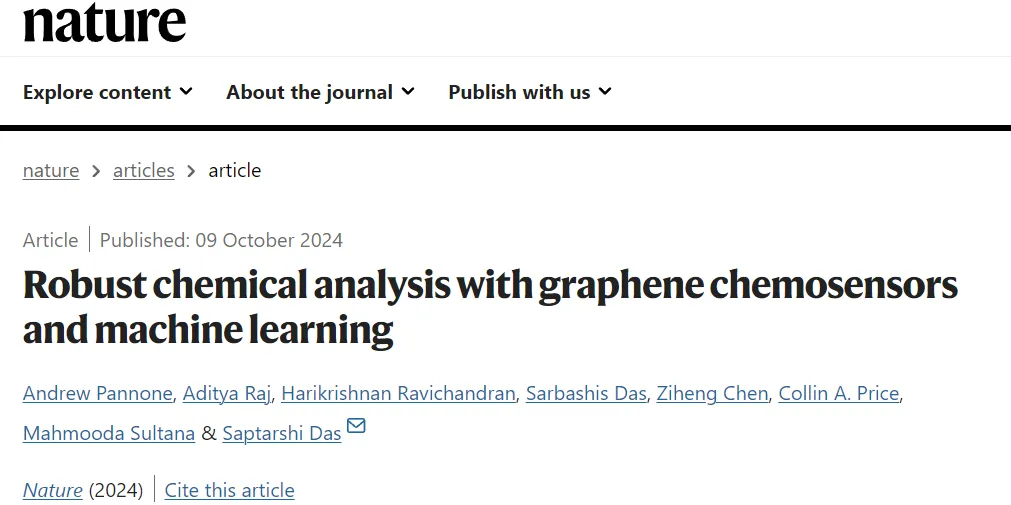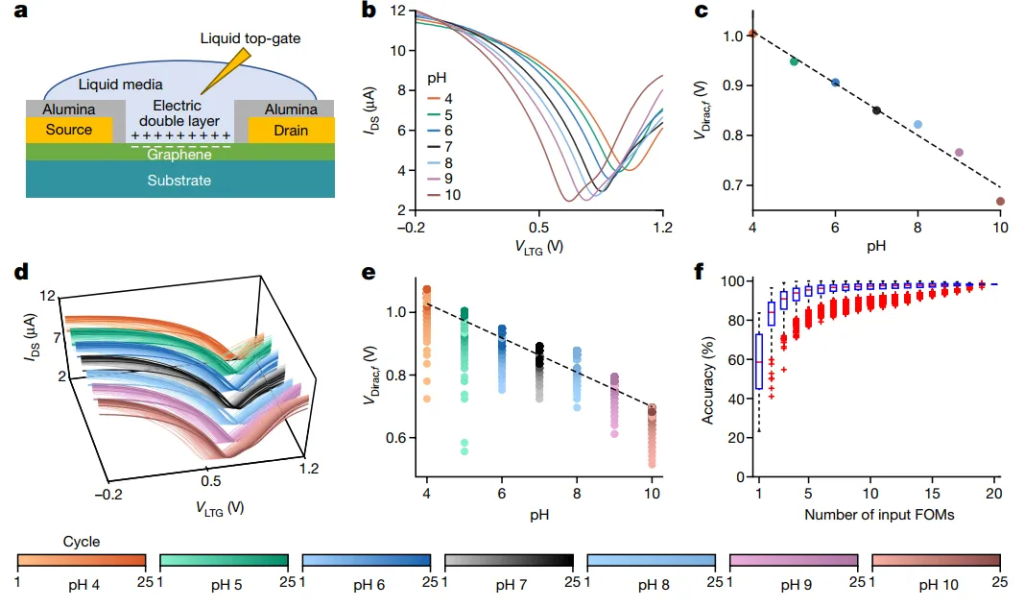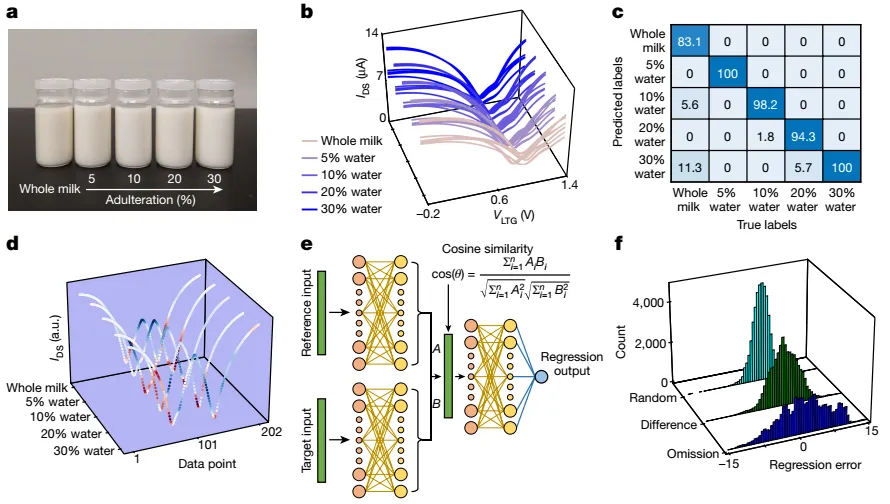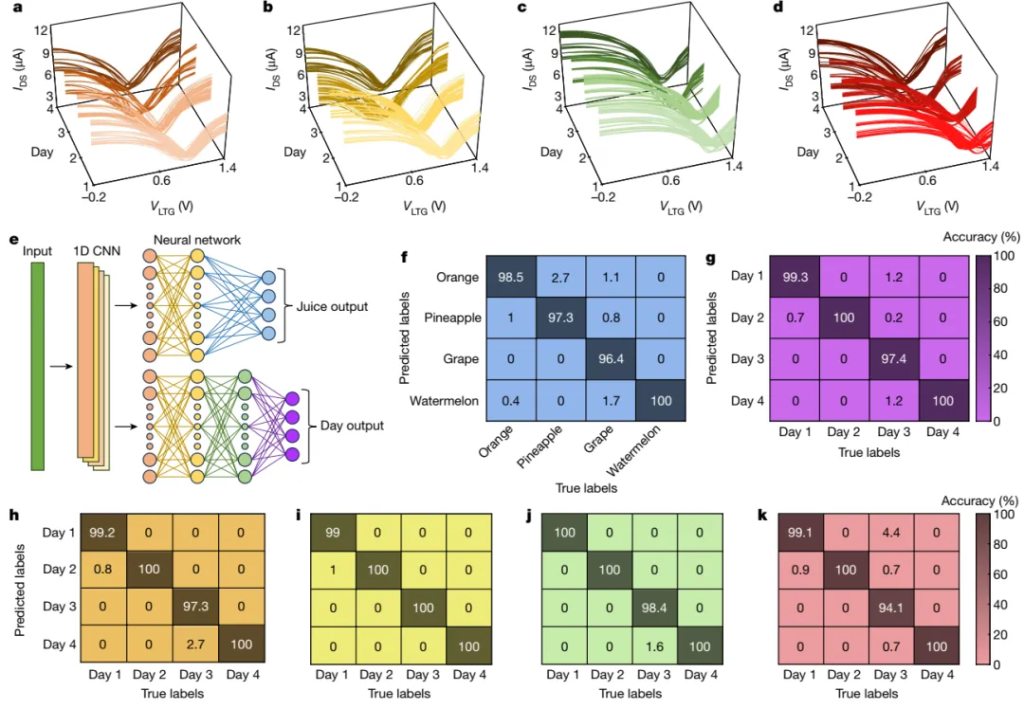Graphene + AI: A Breakthrough Published in Nature!
Overview
Chemical sensors play a vital role in environmental monitoring, healthcare diagnostics, and industrial process control by collecting information about liquid chemical compositions and converting them into electrical signals. Among these, ion-sensitive field-effect transistors (ISFETs) stand out due to their high sensitivity and scalable design, making them a promising technology.
Thanks to its high electron mobility and unique electrical properties, graphene is an ideal material for ISFETs. Graphene-based ISFETs represent a revolutionary advancement for chemical sensors, poised to reshape the sensor industry and accelerate commercialization.

In a groundbreaking development, Professor Saptarshi Das from Penn State University combined graphene ISFETs with machine learning algorithms. This fusion dramatically improves chemical sensing performance, addressing challenges such as sensor variability across cycles, devices, and chips. The resulting sensors precisely detect pH levels, food adulteration, and hazardous contaminants with exceptional accuracy.
Moreover, one sensor design can be used across multiple applications without recalibration or retraining, creating a cost-effective platform for chemical sensing. This innovation has been successfully applied to the food industry, detecting food adulteration and ensuring safety, thus demonstrating ISFETs’ potential across diverse fields.
The findings were published on October 9th, 2024 in Nature under the title “Robust chemical analysis with graphene chemosensors and machine learning.”
Key Figures and Visuals

Figure 1: pH sensitivity of graphene-based ISFETs and mitigation of non-ideal factors.

Figure 2: Artificial neural network model explaining the pH sensitivity of the ISFETs.

Figure 3: Classification and quantification of adulterated milk samples.

Figure 4: Machine learning-assisted graphene ISFETs for food identification.

Figure 5: Monitoring food freshness using AI-powered graphene ISFETs.
Research Highlights
This research demonstrates the potential of graphene ISFETs for use in environmental monitoring, healthcare, industrial control, and food safety. Some key insights include:
1.
pH Sensitivity: Graphene ISFETs accurately sense pH levels in liquid solutions. The paper also discusses non-ideal factors affecting ISFET performance and provides methods to mitigate them.
2.
AI-Enhanced Performance: The integration of machine learning algorithms overcomes issues such as sensor variability and enhances accuracy, allowing for wide-ranging applications with a single sensor design.
3.
Food Industry Application: This technology has already been tested for food safety and adulteration detection, demonstrating its value in ensuring food quality and monitoring freshness.
Future Potential
This study lays the theoretical groundwork for graphene ISFETs to become mainstream in multiple industries. The combination of AI with graphene sensors offers significant advantages, including:
- Cost reductionthrough reusable sensor designs.
- Wider applicationswithout requiring frequent recalibration or retraining of models.
- Improved accuracyin detecting contaminants and monitoring environmental conditions.
With further optimization, graphene ISFETs could become essential tools in smart agriculture, healthcare diagnostics, food safety, and industrial process monitoring.
Reference
Pannone, A., Raj, A., Ravichandran, H. et al. “Robust chemical analysis with graphene chemosensors and machine learning.” Nature (2024). https://doi.org/10.1038/s41586-024-08003-w

